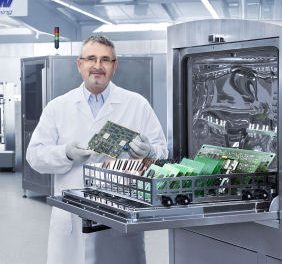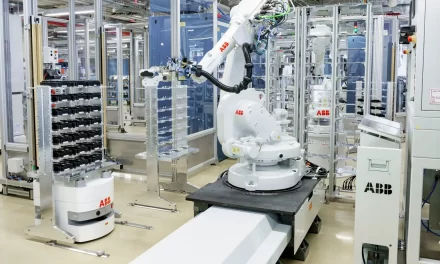Keeping industrial control with ASICs
More than two thirds of engineers within the UK’s manufacturing sector report that business has returned to or even surpassed pre-pandemic levels, in a report published by Essentra Components in early 2023. As manufacturers strive to meet production demands, more and more businesses are using automation technologies, driven by industrial control systems. Here, Richard Mount, Director of Sales at ASIC design and supply company Swindon Silicon Systems explains the crucial role of ASICs in improved industrial control systems.

The control system works by first monitoring process variables, such as temperature, pressure, or position. This data is then processed, and decisions made dependent upon the result. The resultant is then used to determine what actions need to be taken.
Traditionally, this cycle of monitoring and adjusting would often be done manually, with workers taking frequent readings of various monitors around the plant. But the adoption of industrial control systems allows these processes to become automated, operating in closed-feedback loops. By removing the need for manual monitoring, the risk of human error is reduced, and more readings can be taken within a given period.
Position sensing
One example of an industrial control system is that used for position sensing. Encoders are used to determine exact positioning of moving objects. This can be done by either directly providing an absolute position value, or by using the direction and velocity of movement to derive position. For sensitive applications where precise positioning is paramount, optical encoders can be used to obtain positional information to an accuracy of up to one nanometre.
Both linear and rotary optical encoders may be used depending on the nature of the movement. In a linear encoder, the sensor or transducer is paired with a marked position scale. The sensor counts the lines on the scale to determine position and converts this into a digital signal.
Rotary encoders work in a similar way, but instead detect the angular or rotational movement of a shaft. An LED shines through an etched rotating disk onto a mask, creating patterns unique to each arc revolution. These unique light patterns illuminate the sensors beneath, which then use these unique patterns to determine rotational movement.
The sensing element within optical encoders is the photodetector or photodiode, which converts photons of light into an electrical signal. Before this information can be processed by the main logic controller, the analogue signal must first be amplified, conditioned, and converted into a digital signal. This digitisation, which can be performed by standard ICs, transforms the signal into something that can be understood by digital equipment. The conversion and conditioning processes are crucial in allowing data transmission and interpretation by the central control.
ICs also facilitate the communication between these individual devices, allowing for the creation of “joined-up” manufacturing systems. Each IC will often work alongside many other sensor interfaces and communication ports. To streamline the process, some processing may be done locally at the sensor before reporting the data back to the main console.
Data transmission is possible through both wired and wireless communication protocols, with the most common protocols being the Serial Peripheral Interface (SPI), and the Inter-Integrated Circuit (I2C). These two interfaces facilitate short-distance communication between peripheral devices and microcontrollers and are a key link in ensuring all devices and equipment are synchronized with one another. Industrial specific protocols such as I/O–Link, either wired or wireless, are now widely used and BLE is also making an appearance.
Off-the-shelf, standard ICs may be suitable for performing the necessary signal conversion, amplification, and communication required. But for manufacturers who are seeking a more sophisticated industrial control system, choosing a custom IC, or Application Specific IC (ASIC) can provide the technical and commercial competitive edge.
Why choose an ASIC?
ASICs are designed with their specific application in mind, where optimised performance and environmental objectives are achieved through a customised solution. This approach leads to a chip optimised for its use, whether it’s within a pressure sensor or facilitating accurate positioning in a drive system.
When it comes to industrial applications, this optimisation can make a huge difference when considered across the entire manufacturing plant, by improving performance where it is required and maximising production. This improved performance can also help improve and maintain product quality, as well as reduce the amount of waste product as a result of manufacturing imperfections.
The smaller footprint and reduced power consumption offered by ASICs also expands the number of possible applications and areas for ASIC-based technology, leading to more efficient processes overall.
And unlike standard ICs, ASICs come with non-obsolescence strategies. With industrial equipment expected to work for many years, it’s key to ensure availability of ICs. Standard ICs may not have guaranteed supply for the entirety of the control system’s lifetime, which can cause issues later down the line when performing maintenance or repair work.
At Swindon, ASICs are designed with non-obsolescence in mind. By considering product lifetime right from design, the ASIC designer can choose appropriate production methods, guaranteeing a supply for the lifetime of the product.
As manufacturers seek to produce more, and in less time, industrial control systems are key in making the most of automation technology and maximising process efficiency. By looking deeper into the industrial control system and optimising right from chip level, production and efficiency can be taken to new heights.













